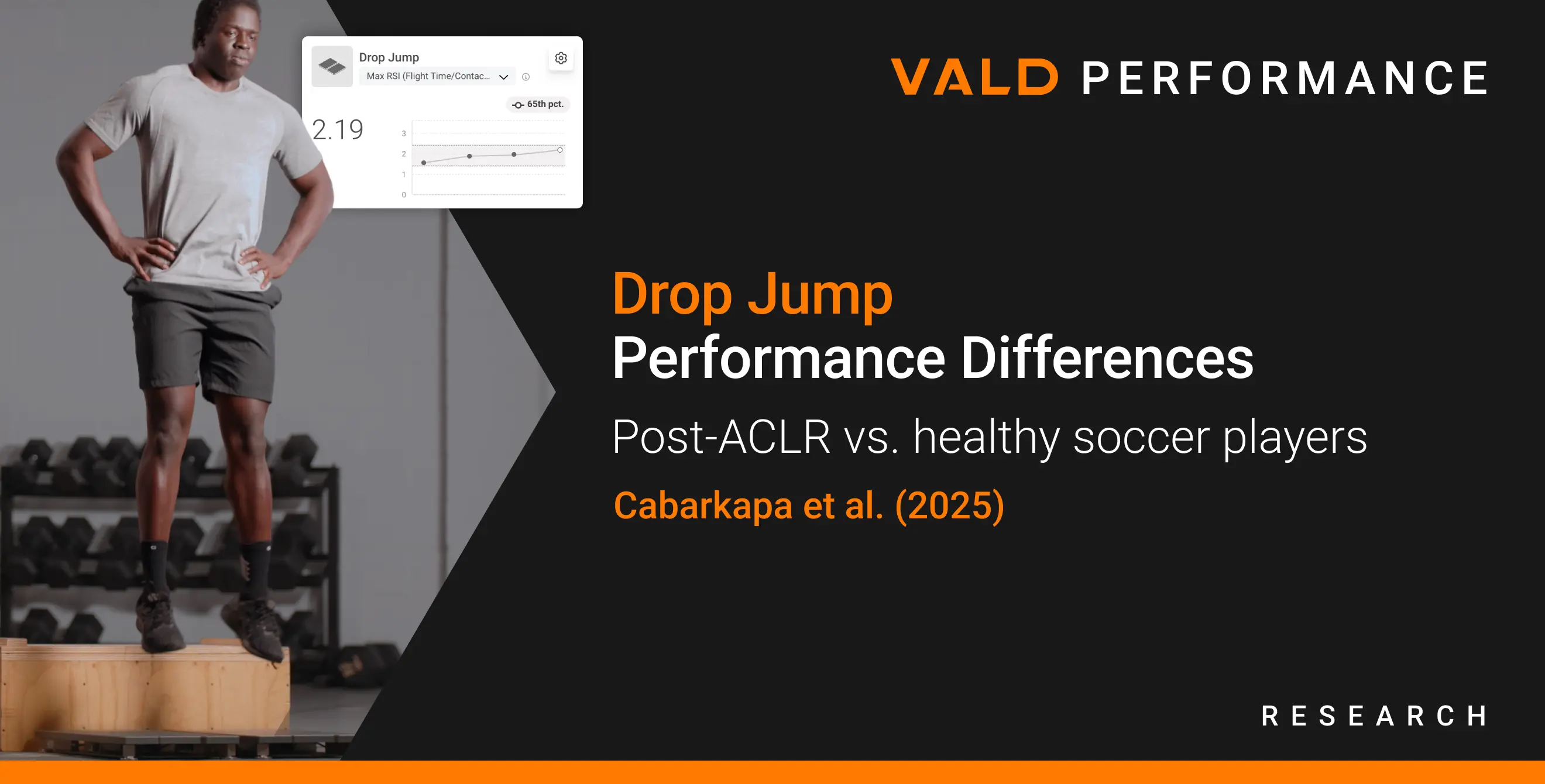Drop Jump Performance Differences: Post-ACLR vs. healthy soccer players
Available in:
EN
Study Information
Cabarkapa, D., Cabarkapa, D. V., Song, Y., Fry, A. C., Gisladottir, T., & Petrovic, M. (2025). Drop jump performance differences between ACL-injured and healthy semi-professional male soccer players. Frontiers in Sports and Active Living, 7, 1618284.
https://doi.org/10.3389/fspor.2025.1618284
Purpose of the Study
The study investigated whether a bilateral 30cm drop jump could distinguish lower-body neuromuscular performance and inter-limb asymmetries between semi-professional male soccer players who were approximately nine months post-anterior cruciate ligament reconstruction (ACLR) and healthy players. The rationale was that drop jumps would be demanding enough to reveal persistent performance deficits as measured by force plates.
Methods and Key Findings
The study included 44 semi-professional male soccer players: 16 post-ACLR (~9 months) and 28 healthy players. Athletes performed three non-consecutive 30cm drop jumps with “hands on hips” (no arm swing), resting 30-45 seconds. Data were collected using dual uniaxial force plates (ForceDecks Max) with a sampling rate of 1,000Hz. The force-time metrics of interest were the following:
- Jump height
- Contact time
- Reactive strength index (RSI)
- Eccentric and concentric phase durations
- Peak impact force
- Peak drive-off force
- Peak landing force
In addition to these metrics, inter-limb peak impact and drive-off force asymmetries were calculated.
Between-group differences were tested with independent t-tests (mean and standard deviation) or Mann-Whitney U tests (median interquartile range), depending on distribution. Statistical significance was set at α = 0.05, and effect sizes were reported.
Key findings include:
Semi-professional soccer players who were approximately nine months post-ACLR demonstrated clear performance deficits during a 30cm drop jump compared to healthy players:
- Jumped nearly 40% lower
- Spent about 21% less time in the eccentric phase (indicating stiffer landings and reduced force absorption)
- Showed 50% greater drive-off asymmetry (post-ACLR players averaging around 15% asymmetry vs. 9% in healthy players)
While differences in impact force asymmetry (+16%) and contact time (−9%) did not reach statistical significance, they trended toward clinically relevant deficits. Importantly, RSI showed no group differences, highlighting that single ratio metrics can mask meaningful underlying asymmetries and movement quality deficits that are detectable with ForceDecks’ more detailed analysis.
VALD’s Solution
ForceDecks provides practitioners with a fast, field-ready drop jump assessment that can potentially uncover persistent ACL-related deficits, even nine months post-op. By tracking key metrics such as jump height, eccentric duration and drive-off asymmetry, practitioners can visualize deficits in real time and monitor progress over time. Alongside other objective and subjective assessments, ForceDecks can support data-informed return-to-play decisions.
To learn more about applying VALD’s human measurement technology to ACL rehabilitation and return-to-play decisions, download our Practitioner’s Guide to ACL or get in touch with our team.
